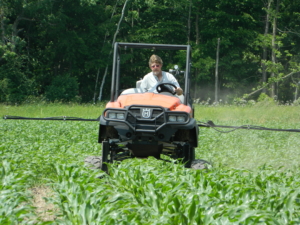Reflection And Planning Ahead
Now that planting season is behind us, it’s time to reflect how things went and start planning for next year. Here are some recommendations from PEG Senior Forage Manager, Carl Key:

Erratic stands can be caused by uneven planting depth, planter issues, disease, insects, soil crusting, low germ seed, planting before soil temperatures are warm enough and herbicide injury. Make a note NOW to make sure it doesn’t happen next year. Any or all of these issues can affect yield and quality. Work with your PEG FORAGE MANAGER and agronomist to identify root causes and plan ahead. Remember at PEG, we value your business and won’t ship poor quality product.

It’s time to take stand counts. What is the population? Check at least 4 locations in the field and take a minimum of 50 foot of row to acquire accurate data. Are you satisfied and does it meet your expectations? This is very important to know and note. Make sure this fall to draw the correlation between your notes, harvest data and forage samples. If changes need to be made and starch levels are not to your liking, populations and/or hybrids need to be adjusted. This is also the time to pull tissue samples and look for any potential nutrient deficiencies. During this stage of growth, scout for Cutworms and Armsworms as well. Don’t forget this is the time to apply any post-emergence herbicide before weeds reach 4”.

It’s best to avoid field applications between the sixth and eighth full collar leaf. This is the time when ear initiation starts and could potentially affect kernel rows and length. Depending on equipment and time constraints, yield responses increase the longer you can delay nitrogen application prior to tassel, unless plant stress indicates nitrogen deficiencies. Monitoring mid-silk (50% of plants show at least 2” of silk), and counting forward 52 – 56 days, is a guideline for 30-34% dry matter corn silage. Before tasseling, also check for leaf diseases. If severe, diseases could warrant application of a fungicide, which could protect both yield and quality.

It is a good idea to take a second stand count. Compare these to initial populations taken earlier in the season. During the next scouting trip at early milk line several things can be combined:
*On very early-planted corn, prior to silking and pollination, scout for Western Bean Cutworm
*At early milk line check again for Western Bean Cutworm
*Check plant moisture to project potential harvest date
*Check adult corn rootworm beetles on silks
* Don’t rely on milk line to predict and project whole plant DM. Good PEG silage hybrids dry down much differently than grain hybrids chopped for silage
*Prepare for next season
*Plant cover crops
Carl Key
PEG Senior Forage Manager





